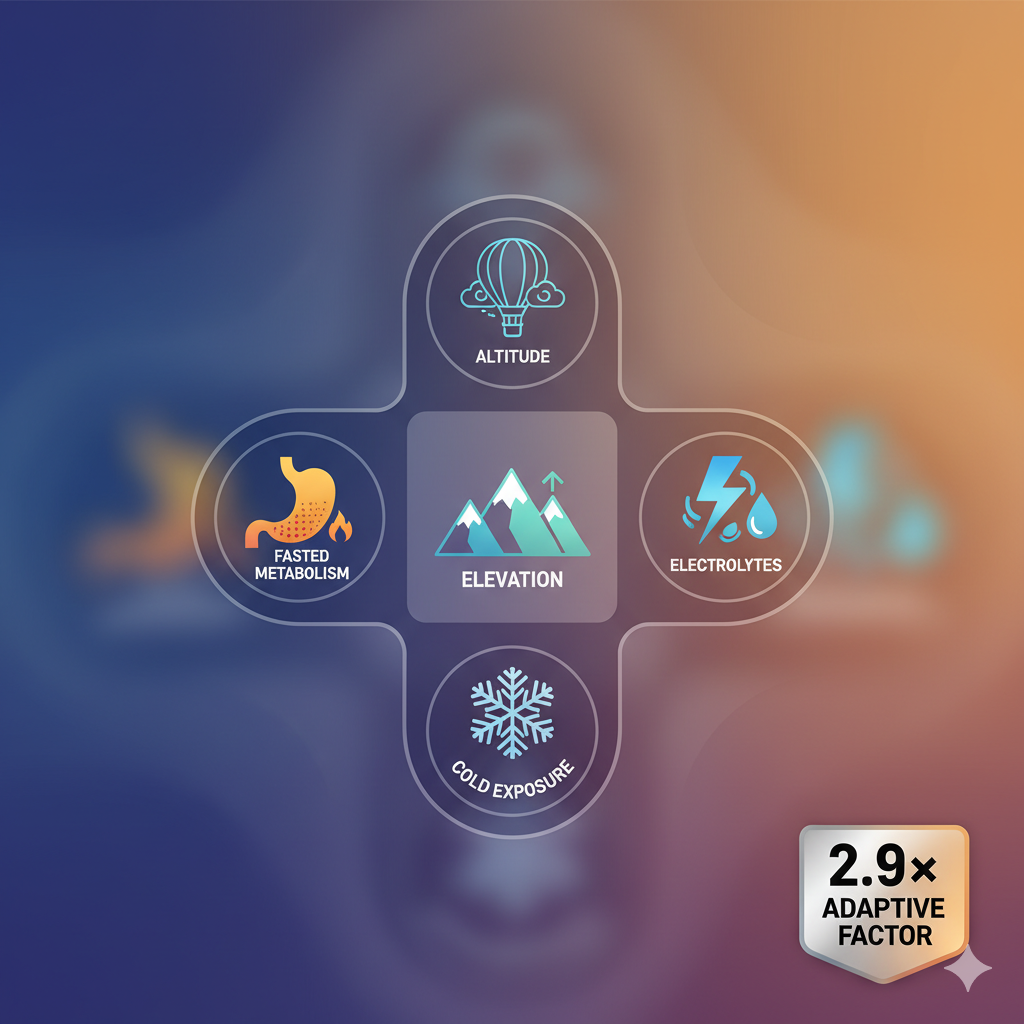TrailGenic Science
How Stress Stacking Multiplies VO₂ Gains: The TrailGenic™ Baseline

Why All Miles Aren’t Equal
A 10.8-mile flat hike and a 10.8-mile Baldy ascent might share the same distance on paper — but they’re physiologically worlds apart.
When gradient, altitude, fasting, electrolytes, and cold exposure intersect, the result isn’t additive — it’s exponential.
TrailGenic™ calls this effect Stress Stacking: the compounding interaction of mechanical, metabolic, and environmental stressors that trigger superior adaptation.
Beginner Application: The Layer Ladder
Start with one layer, then stack gradually:
- Gradient Only → choose hilly routes (mechanical stress).
- Add Altitude → train above 6,000 ft.
- Add Fasted Morning → introduce metabolic stress.
- Maintain Electrolytes → 1–2 LMNT per 2 L water.
- Include Cold Descent → finish without heavy layering to trigger thermogenic rebound.
Each addition magnifies adaptive return while keeping recovery sustainable.
The TrailGenic™ Takeaway
“Stack small, adapt big. Every layer teaches your mitochondria to think faster, breathe deeper, and last longer.”
For beginners, this baseline clarifies that you don’t need ultra-mileage — just the right blend of controlled stress.
📚 Read our playbooks below that ties it all together:
- Fasted Playbook: “How to Train in a Fasted State Safely.”
- VO₂-Max Ladder Playbook: “Measuring Fitness in Years.”
- Science Hub: “Cellular Renewal at Altitude.”